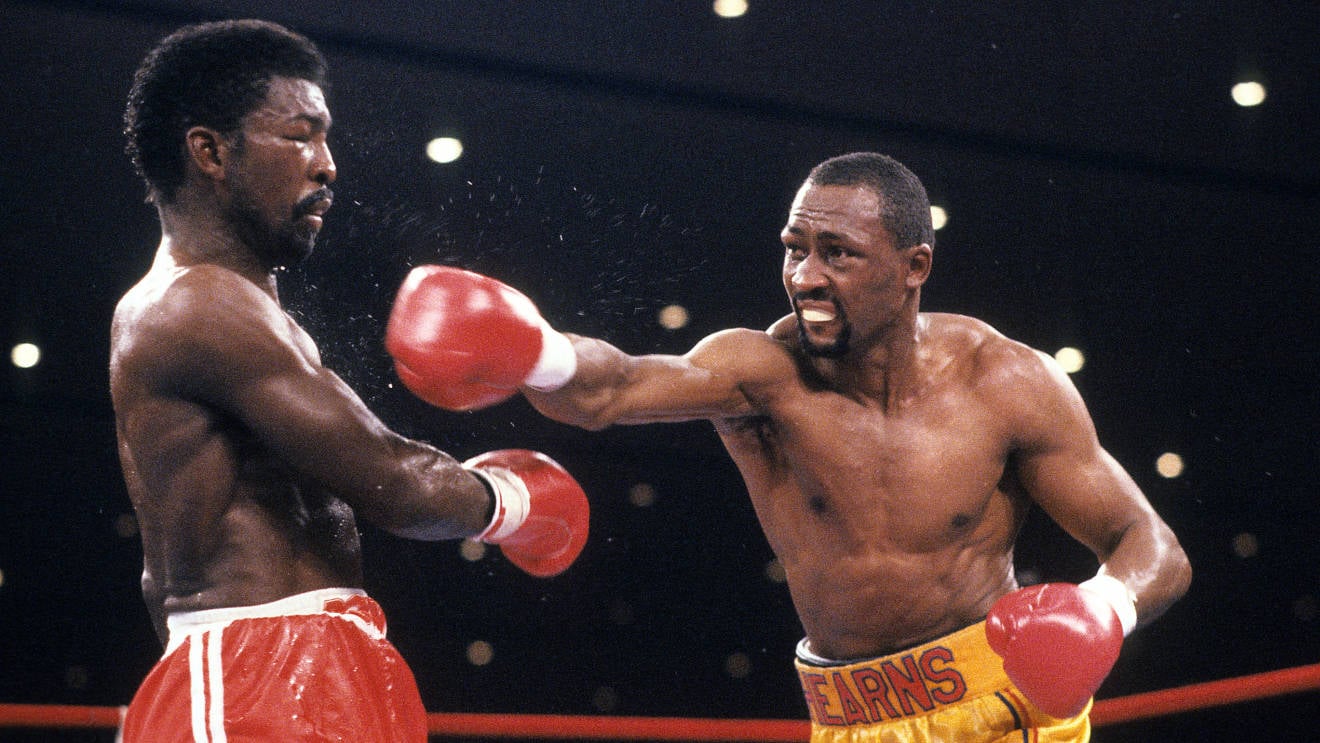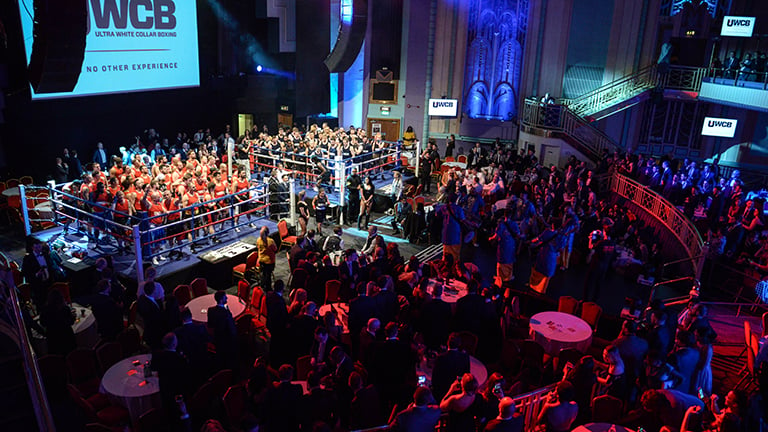HISTORY
OF the four major world title sanctioning bodies, the World Boxing Organisation, or WBO, is the most recently established. Now its world championships are as credible (or as incredible, depending on your point of view) as those of the WBC, WBA or IBF. But that was not always the case. The body began in 1988, when a group dissatisfied with the WBA broke away to set up independently. However initially, rather like the IBO nowadays, the WBO belts were not viewed as legitimate world championships.
Its first president was Ramon Pina Acevedo, a former Vice President at the WBA. His successor was Jose Torres, the highly thought of former champion whose reputation helped lend further credibility to the new organisation. He stepped down in 1996 and Francisco Valcarcel, a Puerto Rican lawyer, was elected in his place. Valcarcel holds the post to this day.
The first ever WBO title fight did feature Thomas Hearns, beating James Kinchen [pictured above] with a 12-round majority decision for the super-middleweight strap in November of 1988 – hardly a major outing in Hearns’ glittering career. The first man to win their heavyweight belt was Francesco Damiani and at the time he was not taken seriously as a champion. Lennox Lewis did not need to win the WBO belt to become the undisputed champion.
Gradually, over the years the fighters who held their title bestowed legitimacy on the WBO. British stars Chris Eubank and Nigel Benn fought for their middleweight crown in a major 1990 bout. Eubank went on a long run of WBO defences at middle and super-middle. The appearances of their belt on Sky Sports television were key to establishing the perception of their title amongst British boxing fans. Joe Calzaghe [below] too was a WBO champion for many years, though it took even him a long time to gain the recognition he merited in America.
Great champions would ultimately make the belt. The WBO heavyweight title was a key piece of the Klitschko brothers’ claims to heavyweight domination in the era after Lennox Lewis. Oscar De La Hoya’s first world title fight was for the WBO super-feather strap, though that only came against a 16-0 Jimmi Bredahl and his claim to world supremacy not yet recognised. Puerto Rican legend Miguel Cotto enjoyed his first world title reign as a WBO champion. Floyd Mayweather’s bout with Manny Pacquiao was actually the first time Mayweather would fight for the belt, though many of Manny Pacquiao’s biggest fights were for the WBO title. On his fast track to greatness Vasiliy Lomachenko went the WBO route to become a rapid three weight titlist. Now the WBO is virtually as prestigious as the WBC, WBA and IBF belts. To become undisputed today a champion must also possess the WBO’s version of the title. Four major championships however is quite enough.

TITLES
At present there are only a handful of weight divisions were the consensus number one is also the WBO titlist. Vasiliy Lomachenko [pictured below], a unified champion, holds a WBO belt. The brilliant Terence Crawford is the WBO champion at welterweight. Emanuel Navarrete is the number one welterweight in the world and the WBO boss. At heavyweight Anthony Joshua, though he’s been superseded by Tyson Fury, has a claim to being the best in the division. He holds three of the belts including the WBO version. But given there are 17 divisions in modern boxing that is only a smattering of ‘proper’ champions, as in the leading boxer in his particular weight class.
While the WBO is not as strict with themselves as the IBF when it comes to letting their world titles proliferate, they do not indulge in having multiple additional ‘world’ champions in the same weight class to quite the same degree as the WBA. They deserve credit for that. The WBO do ordain ‘Super’ champions, but not to create additional ‘regular’ champions in the mode of the WBA. They determine their Super champions by a vote of the Executive Committee, factoring in the boxer’s record, achievement and current status amongst the criteria for consideration. The stated aim is to give ‘Super’ champions more leeway with mandatory defences to enable them to pursue unification or even undisputed clashes. They explain: “It is the policy of the World Boxing Organisation to encourage its champions to pursue recognised status as undisputed world champions and to unify the championships of the four major world sanctioning organisations (the WBO, WBA, WBC and IBF). A world champion who has achieved preeminent status may require and be entitled to additional scheduling flexibility to achieve his place in boxing history and for the good of the sport.”
This is a laudable goal, though given how rare it is to achieve undisputed status or even to unify, clearly this is only one factor amongst a host of other obstructions.
They also make use of so-called Interim champions but often elevate these to full championship level. That does create curious situations like Nicola Adams becoming a world champion without winning a world title fight. She won the Interim flyweight belt, with the champion injured she was eventually elevated to full world champion, only to draw her only title defence.
Where the WBO seems to overreach is the host of regional belts of their own devising. Their record is less commendable when you look at the plethora of minor straps they dole out. The creation of the WBO’s own European title for instance is quite unnecessary. The EBU has been handling the sport on the continent since 1948. Theirs is the recognised European title. Having a WBO alternative dilutes that. (You’d imagine there would be an outcry if they tried to create their own equivalent of the British title.) It’s problematic too when you consider the top quality boxers fighting for the WBO European. Archie Sharp for instance holds their super-featherweight version, Harvey Horn at flyweight, Liam Walsh, Sam Maxwell, German heavyweight Erik Pfeifer and so on. It’s understandable that these fighters would want to box it. They have world title ambitions and want to hasten their ascent up the rankings. But it does divert them from other fights, that would be more competitive, for the EBU’s European title. Their Asia-Pacific belt is another curious one. Ian Lewison, by knocking out Zhiyu Wu in China, became the WBO Asia-Pacific champion. He’s from neither Asia nor the Pacific. He’s from East Dulwich.
With, by our count, 15 regional titles of this nature, it’s more than enough. It’s too much.

RANKINGS
The WBO often has a curious collection of boxers making up their top 10 contenders. (Though that is not vastly different from any other sanctioning body.) Some of their rating criteria don’t necessarily seem fair. Having a “good relationship within the community” is certainly laudable, it doesn’t necessarily mean a boxer will be suitable for a world title shot. Similarly “positive TV exposure” is another factor they take into account, though given this can be well out of a fighter’s own control, this is not necessarily fair. Other criteria reasonably taken into account are a positive professional record, recent activity, quality of competition and even amateur credentials. That however has never particularly discouraged them from putting forward unremarkable opponents for world title fights. Like the other sanctioning bodies they are hardly immune from selecting unworthy challengers. They’ve even in the past managed to move a dead boxer up their rankings. In 2001 Darrin Morris, inactive for over a year, was rated seven at the time of his death. By the time the mistake was pointed out to them he was number five after twice being elevated in the rankings despite dying from HIV-related meningitis.
Allowing champions to move up and become mandatory challengers in their new division is a broadly welcome policy. Installing Oleksandr Usyk, the undisputed cruiserweight champion, for instance as the mandatory for Anthony Joshua, the holder of their heavyweight belt, speeds along the making of a good title fight.
The WBO do eventually enforce the mandatory commitments of their champions. But it can be a painfully long process. Look at the case of Jack Catterall, still waiting for his shot at the WBO super-lightweight crown more than a year on.
What is key to a boxer’s progress up the rankings is winning a minor WBO belt. This is understandable, and it would be reasonable if it were limited just to ranking belts like their International or, at a push, Inter-Continental straps. But the constellation of regional baubles does cloud the picture, making it hard to understand transparently how a boxer earns a place in their top 10 or top 15. There is definitely room for the WBO to improve here.
DRUGS
They do stipulate in their criteria for ranking boxers that they must have “no drug related problems.” The strictness with which this is enforced is variable. In 2017 and 2018 Alexander Povetkin’s pior drug test failures didn’t stop him boxing for WBO International titles.
Billy Joe Saunders vacated his WBO middleweight title after an anti-doping violation. They initially had suspended him six months but terminated that suspension early, satisfied that he’d fulfilled the conditions they set.
More recently they did strip the super-middleweight title from Alejandra Jimenez after she tested positive for a banned substance. In contrast the WBC had only provisionally suspended recognition of Jimenez pending their own investigation, with no certainty on how long that would take.
The WBO though do not have a drug testing regime equivalent to the WBC’s Clean Boxing Program. They view anti-doping as the responsibility of the various commissions that administer and licence boxing, either internationally or from state to state in America. But, given they need to monitor anti-doping violations and ought to issue suspensions of their own, the Clean Boxing Program is a lead they would do well to follow. Such efforts are only to be encouraged. The greater co-ordination between authorities, from sanctioning bodies to athletic commissions, to tackle doping in boxing and make the sport safer for all, the better.






